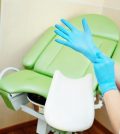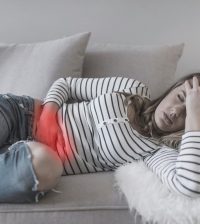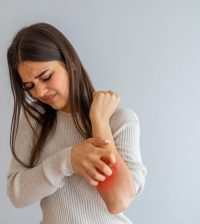- Tips for Spending Holiday Time With Family Members Who Live with Dementia
- Tainted Cucumbers Now Linked to 100 Salmonella Cases in 23 States
- Check Your Pantry, Lay’s Classic Potato Chips Recalled Due to Milk Allergy Risk
- Norovirus Sickens Hundreds on Three Cruise Ships: CDC
- Not Just Blabber: What Baby’s First Vocalizations and Coos Can Tell Us
- What’s the Link Between Memory Problems and Sexism?
- Supreme Court to Decide on South Carolina’s Bid to Cut Funding for Planned Parenthood
- Antibiotics Do Not Increase Risks for Cognitive Decline, Dementia in Older Adults, New Data Says
- A New Way to Treat Sjögren’s Disease? Researchers Are Hopeful
- Some Abortion Pill Users Surprised By Pain, Study Says
Ultrasound Used to Attack Alzheimer’s-Linked Brain Plaque in Mice
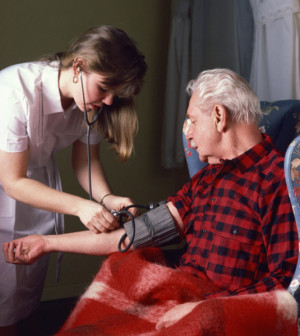
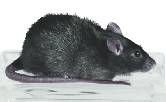
Preliminary research in mice raises the possibility that an ultrasound-based treatment might help eliminate plaque buildup in the brain that’s associated with Alzheimer’s disease.
Scientists don’t know whether the approach is feasible for humans, but the research is promising, especially because of how well mice with an Alzheimer’s-like disease fared after treatment, said study lead author Gerhard Leinenga, a graduate student at the University of Queensland in Australia.
“The mice performed better on three tests of their memory,” Leinenga said, noting their performance was similar to that of healthy mice used as controls.
The ultrasound treatment targets brain-clogging material known as amyloid plaque. Scientists suspect plaque is connected to the development of Alzheimer’s disease — a progressive brain disorder — but its exact role is unclear.
“We know that amyloid interferes with the function of neurons and causes brain cells to die, but not everyone with amyloid in their brain will go on to develop Alzheimer’s or another dementia,” said James Hendrix, director of global science initiatives for the Alzheimer’s Association.
Alzheimer’s, the most common type of dementia, causes problems with memory, thinking and behavior.
In the new study, researchers turned to ultrasound, the same sound-wave technology that helps doctors view internal organs and babies in the womb. The researchers applied ultrasound to mice with Alzheimer’s-like disease after injecting them with “microbubbles” that vibrate when they encounter ultrasound signals.
“In our treatment, ultrasound acts on the microbubbles, causing them to expand and contract in the blood vessels of the brain,” Leinenga said. This disrupts the “blood-brain barrier,” which protects the brain from germs in the blood, Leinenga said, apparently allowing molecules to enter the brain and activate cells that “eat” amyloid plaque.
The technique appeared to reduce levels of amyloid plaque in the treated mice and nearly eliminate it in 75 percent of the animals — without damaging brain tissue. The treated mice also performed better on memory tests, including a maze, places of avoidance and object recognition, the researchers said.
There are many caveats to the new research.
Potential costs and side effects in humans are unknown. And it’s unclear if the treatment will even work, let alone whether it actually halts progression of the devastating illness. Although plaque is thought to contribute to Alzheimer’s, this has not been confirmed.
Also, “human brains and human cognition are much more complex than in mice,” Leinenga said. “And the brains we treated were much smaller than a human brain, with very thin skulls, so this technique using ultrasound to open the blood-brain barrier will need to be optimized in order to treat a human brain.”
Hendrix said the research is “intriguing” but “still very preliminary.”
“People with Alzheimer’s and their caregivers should not ask their doctors about scanning ultrasound to treat Alzheimer’s disease at this time,” he said.
Leinenga said a number of experiments are planned to test the treatment in mice. “And we plan to construct an ultrasound device suitable for treating much larger brains and to test this in sheep,” he said.
The study appears in the March 11 issue of Science Translational Medicine.
More information
For more about Alzheimer’s disease, visit the Alzheimer’s Association.
Source: HealthDay
Copyright © 2024 HealthDay. All rights reserved.




